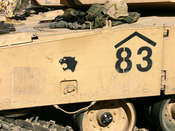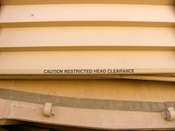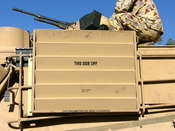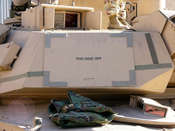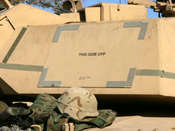1⁄35The Skinny on Combat Identification Panels
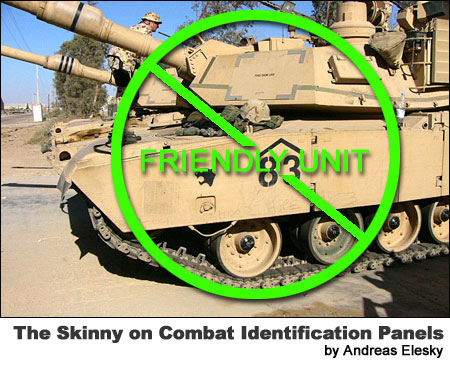
One of the worst things that can happen on the modern battlefield or any battlefield is a blue on blue (Friendly Fire) kill. Over the years many devices have been tested, adopted, or modified in order to reduce blue on blue incidents. In my opinion, as long as a human is involved in the decision making process on whether or not to shoot we will always have the possibility of having blue on blue engagements or deaths. Such is the nature of War! This can also apply to civilians on the battlefield (non-combatants). Enemy troops and non-combatants don’t carry convenient ID panels that say shoot or don’t shoot so a split decision must be made as to the intent of the individual if you make the wrong decision then someone pays with their life. Even the best systems available can’t distinguish between combatant and non-combatant. This simple fact will always keep the human in the decision making process, and this is where the room for error comes into play. So your only options available are to use the best system to minimize or eliminate casualties to friendly forces, and minimize casualties among the non-combatants.
There are numerous ways that we can attempt to identify friendly forces on the battlefield, the first step in this process is to know the capabilities of your equipment as well as the limitations of your enemy; does he poses thermal or passive sights?? Knowing these simple facts will allow you to select a system. In the U.S. Military we say that, “We own the night.” (U.S. Rangers usually argue that they are the only masters of the night) We, as tankers prefer to use our thermal sights because this gives us the ability to see at extended ranges during all types of weather conditions. The cheap and cost effective way to identify friend from foe through thermal sights is to use some type of thermal recognition panel, aka….CIPS (Combat Identification Panels).
The history of the combat identification panel leads back to a suggestion made by a Captain David Jessup of the 4th Infantry Division (Mechanized). Captain Jessup suggested that thermal tape be used for combat identification. His suggestions lead to a decision by the Department of the Army to develop a specific combat identification panel for each type of vehicle platform.
The Combat Identification Panel has one primary component - a flat or venetian style panel approximately (1/8" thick x 24" high x 30" long) covered with a low emissivity thermal tape. The panels are installed flat against the vehicles' exterior shell (with velcro) or placed insided a bracket adapted to hang on the vehicles exterior. CIPs can be mounted in an operational, thermal tape out, or reversed to a nonoperational, Chemical Agent Resistant Coating (CARC) paint side out, mode.
When viewed through FLIR thermal sensors, the CIP shows up as a contrasting cold spot on the hot target image. In the engagement process, a gunner would use this contrast to determine if the targeted vehicle is friendly or unknown. Tests show that the use of CIPs serviceability affect the image gunners see through their thermal sights. The CIP is mounted to provide all aspect coverage, however, terrain features, such as trees and other vegetation, proper defilade firing positions, and other obstacles will break up the thermal image of any
vehicle1.
1 Various sources for this report, some information was provided by the briefs presented and Army Technical publications.




